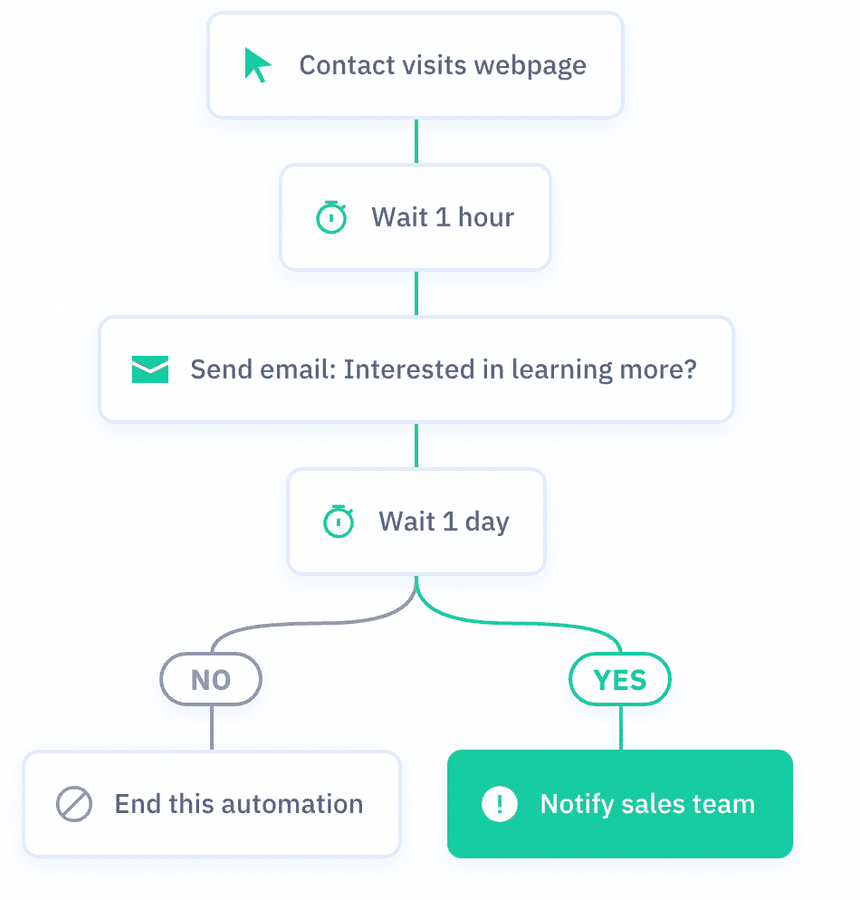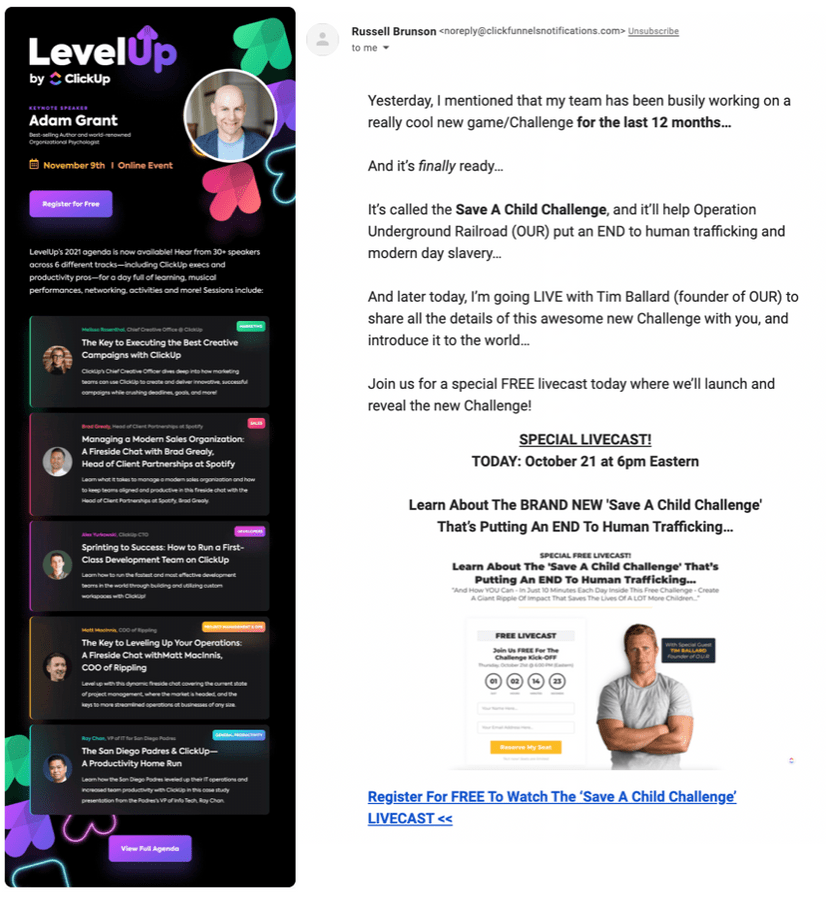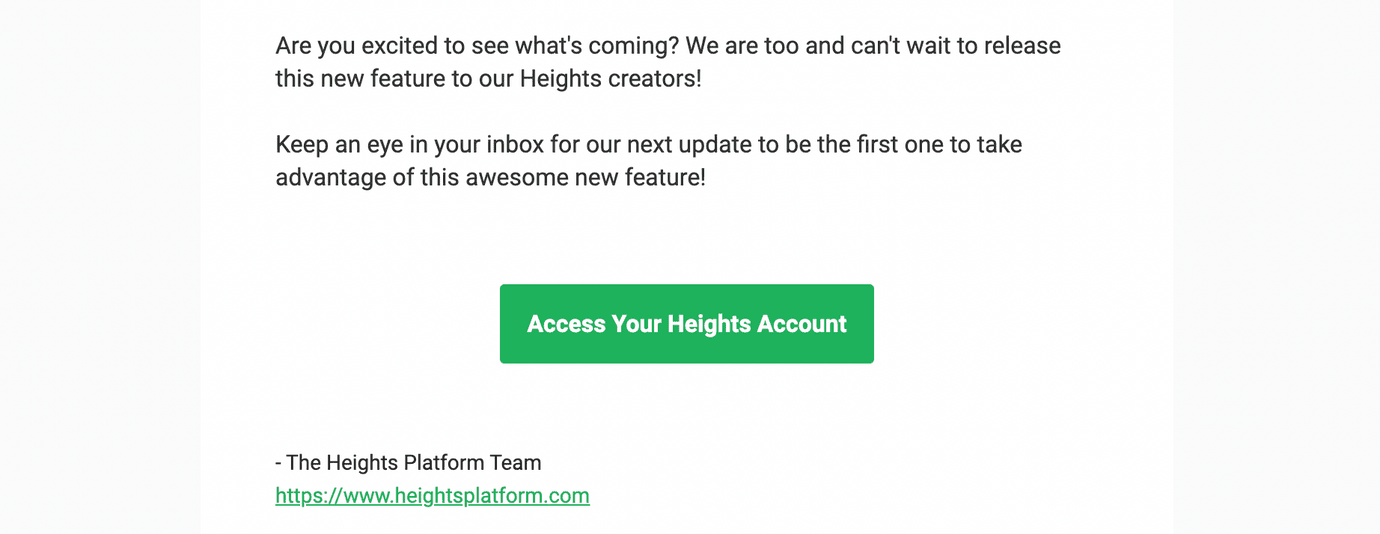Guide to Email Marketing to Promote and Sell an Online Course
11 minute readWith an average ROI of 4,200%, Email Marketing is still one of the most popular and effective ways of promotion.
Every day we exchange almost 320 billion emails worldwide. So how can you stand out from the competition and make sure your emails are converting?
Keep reading this article to learn step by step how to get started with email marketing and create successful email campaigns to promote your business or online course.
The Benefit of Email Marketing vs. Other Promotion Strategies
There are so many benefits that make email marketing stand out from other forms of promotion, let's see the main benefits below:
Cost-effective
Compared to other marketing strategies, promoting a product by email is completely free! The only cost you have is a small monthly fee if you use any email software. There are no advertising fees, PPC, printing or media costs, and there are no limits on how many emails you can send!
Highly Targeted
Your email list is composed of people who actively wish to receive email messages from you. These kinds of customers who already know you and are familiar with your product have a higher chance of engaging with your emails and purchasing from you in the future.
Personalized
With email marketing for online courses, you know who you are promoting your product to. You know your potential customers' names, email addresses and maybe even more information that can help you personalize your messages to them. You can segment your contact list to send more targeted communications to different audience types.
Easily Scalable
Once you have selected your preferred email software, there are no limits on how many emails you can send and how many contacts you can insert in an automation. With email marketing, you can reach broad audiences easily and scale your business with it.
Step-By-Step Guide to Getting Started With Email Marketing
Let's see now what you need to do to start promoting your business or online course with email marketing.
Before getting started, there are a couple of things you need to have:
- A Website or web page to collect email addresses
- Email Software to manage your email campaigns
If you are an online course creator Heights Platform lets you customize your online course landing pages, and you can add a sign-up button to collect emails from your potential customers.
Heights Platform includes AI email tools to help course creators save time and increase conversions. Heights AI can generate sales emails, newsletters, and even abandoned cart follow-ups, customized to your audience.
If you're using Heights, these features are already built in and ready to use inside your dashboard. No third-party tools required!
Step 1: Build and Grow Your Email List
The first step of getting started with email marketing for online courses is collecting email addresses to grow your email list.
If you have contacts from previous customers or campaigns you did in the past, start promoting to them.
However, if you are just getting started, the chances are that your email list is empty, or you have only a couple of contacts from friends and family. In this case, using email finder tools can help you discover relevant prospects ethically and build your list faster.
Add a Sign-Up Button on Your Website or Social Media
This is a mandatory step if you want to collect emails for your future campaigns!
Most website builders allow you to create a simple form to help you collect email addresses, so make sure to have a functioning one on your site.

In addition to your website, it can help have a sign-up form on your social media pages. On Facebook, you could add a CTA designed to invite visitors to sign up for your newsletter.

On Instagram and other social media, you have the option to add a link to your Bio or description, so make sure to add your website or a link to directly sign up to your newsletter.
Create a Lead Magnet
A lead magnet is a digital product that you can offer for free in exchange for email addresses. It could be an eBook, a PDF, worksheet, a video or live stream and so on.

A lead magnet is a powerful way to collect email addresses from potential customers and grow your email list quickly, as it offers an incentive for people to give out their email addresses.
Learn all about lead magnets and how to build one here: How to Create a Great Lead Magnet That Converts to Promote Your Online Course
Build a Pop-Up Form
If you use email marketing tools to manage your email marketing, you have the option to build a pop-up for your site.
As the name suggests, a pop-up form is a form that appears only after a visitor takes a specific action while navigating your website. Depending on your preference, you could set a pop-up form to appear once someone opens your site, after a fixed time or just before someone closes the page.

A pop-up form could simply invite visitors to sign-up for your newsletter, offer a discount or a lead magnet.
Pop-up forms can be an effective way to collect even more email addresses, but make sure not to add too many forms to keep a clean website and not spam your visitors.
Step 2: Segment Your Contacts
Statistics show that marketers who used segmented campaigns saw an increase of 760% in revenue.
The more you personalize your approach and customize your message to different contacts, the higher your chance of engaging with your customers, if not receiving new sales.
But how can you personalize your emails if you are sending thousands at a time?
Segmenting your contacts is an excellent way to do it. Email marketing tools like ActiveCampaign can help you to attribute tags to contacts with similar characteristics.
For example, you could group contacts who already purchased something from you or started a trial, downloaded your lead magnet and so on. Once you have segmented your audience, you can start sending them personalized communications that reflect their preferences and where they are at in their journey.
Step 3: Schedule Your Emails
Consistency is essential when it comes to email marketing. You cannot expect to see any significant results after sending only one or two emails.
You need to find the balance between being consistent with your email marketing and avoiding spamming your contacts. Email marketing can be better defined as a process rather than a one-time action of promoting your business. This is why being consistent is so important.
It is a good idea to think about your email topics beforehand and create a schedule to follow.
If your emails are sent on a regular basis, you can better educate your prospects about your product and build a relationship with them.
Even if your contacts do not open every single email you send them, they still get a notification with your name on it. After you do this over and over again, they will start to recognize you and trust you.
You don't have to schedule a year-worth of emails in advance, but just make sure you are consistent with your messages.
Learn more about this:
- 7 Emails You Need to Send to Promote Your Online Course
- Proven List-Building Strategies for Online Course Creators to Grow Your Email List
Step 4: Use Automations
Automations can help you streamline your communication and lower your workload.
Depending on which email software you choose, you can get creative with building complex automations. However, if you are just getting started, we recommend setting up simple automations to start with.
You could decide to automatically send an email whenever someone signs up for your online course, completes a module or purchases a digital product.
By setting up a few basic automations, you will look more professional in the eyes of your customers and you no longer have to worry about forgetting to email them manually.

You could use automations simply to assist you with customer service tasks but also to promote your online course to prospects and new leads.
For instance, if you are using a lead magnet to collect new emails of potential customers, you could then insert these contacts in an automation where they receive a new email every week or so. That email could provide contacts with some additional relevant value, and depending on their engagement with it, your automation might send them an email offering them an opportunity to buy a product from you.
Step 5: Understand the Analytics
If you actively use an email marketing platform and send newsletters and automations, you will collect data about your contacts' behavior.
Email analytics is information that shows you how your contacts engage with the marketing emails you send them. The easiest way to monitor the performance of your campaigns is by looking at the analytics collected by your email software.
Learning to understand these metrics is extremely important if you wish to see results with email marketing. By looking at your open rate, click rate, unsubscribe rate and more, you can understand if your email content needs to be adjusted and what content your audience prefers.
Depending on what your goals are, you may want to track specific metrics over others.
If you are using ActiveCampaign, check out this guide to understand the analytics from marketing emails.
Step 6: Use AI to Streamline and Improve Your Email Campaigns
Thanks to tools like Heights AI, course creators no longer need to manually write every email or guess what will resonate with their audience.
On Heights Platform, you can use AI to write different types of marketing emails, and you can schedule them and segment your contacts based on behavior!
These AI tools are built into Heights Platform and integrate directly with your courses, products, and sales pages.
How to Write Engaging Emails
Simply sending an email is not going to help you bring in new sales. The emails you send need to be engaging and provide value to your contacts if you want them to open and take action.
While it can be hard and time-consuming to come up with the perfect email content every time, the good news is that with email marketing, you have the flexibility to draft an email as you like, and there is space for personalization.
Compared to posting on social media or running ads, your marketing emails can be as long as you want and be customized to your liking.
Let's see what are some critical aspects you need to remember to compose a great marketing email:
Write a Powerful Subject Line
Even though this is the smallest part of an email, the subject line is probably the most important one.
The subject line is what makes your contact want to open an email or delete it without even reading it.
You could have the best email content, but it is all in vain without a powerful subject line.
Studies show that 69% of email recipients move email in the spam folder based only on the subject line.
So how can you make sure that your subject line is interesting enough? Here are a few tips:
- Keep the subject line short: try to convey your point in less than nine words. A too-long subject line is hard to read from a notification.
- Be descriptive: You want to make sure that recipients can immediately understand the content of your email while at the same time being intrigued by it just after reading the subject line.
- Avoid looking like Spam: there are specific characteristics that people and software recognize as "spammy." Avoid inserting too many punctuation marks, using the word "free" too much or adding too many emojis. There are many free "spam checkers" available that will analyze your content before you send it so you can ensure it isn't likely to be categorized as spam.
Make Your Email Visually Appealing
You managed to write a subject line that incentivizes your contacts to open your email. Now you need to make sure that your content is easily digestible and they can quickly grasp the right information.
Your goal here is to make your email visually appealing and most importantly easy to read.
Try adding images, text boxes, and other visual elements to make your emails stand out and engage your contacts.
If you have a lot of text in your emails, make sure you are separating your lines to make it easy to read, add bullet points, titles and so on.
Here are two very different examples of promotional emails:

Both emails contain an invitation to join a free online event and they are both doing a great job, but using different techniques.
The one sent from ClickUp on the left is extremely visual and colorful. It focuses on guiding the reader to the call to action. There is less text and more images and visual elements. Here the viewer immediately understands what the email is about.
While the one on the right side sent from Russell Brunson uses a lot more text (the picture does not show the whole email) and more basic visual elements.
Instead of focusing on the visual aspect, Russel Brunson prefers to tell a story and engage his audience this way. Even though he uses fewer visual elements, it is still easy for the customer to read this email and understand its content, because the text is engaging and he plays with spacing and text styles.
Add a CTA (Call to Action)
A call to action (CTA) is a button or hyperlinked text that redirects users to a web page. The goal of a CTA is to drive consumers to take a specific action.
With email marketing, it is essential to offer specific directions to potential customers to continue the conversation or invite them to interact with your brand.
Whether you are sending out a newsletter, a thank you email, or an announcement, your marketing emails should always include a CTA to encourage potential customers to engage with you.

Your CTAs can have different end goals: from inviting potential customers to purchase, to visit your site, logging into their account and so on.
Make sure that your call to action button stands out from the rest of the text and it communicates a clear purpose.
Write Content that Resonates With Your Audience
Your contacts will enjoy your emails much more if you manage to write content that resonates with them and interests them.
Chances are that if someone is on your email list, it means they want to receive updates from you and info related to your niche. So try to live up to their expectations and send out informative, valuable content with your emails.
The best way to achieve this is by knowing your audience. What do they like? What are their goals? What problems do they encounter?
If your marketing emails provide value and a solution to your contacts' problems, they will be more likely to take action and will be more receptive to your future emails.
It is also important to understand when it is best to send certain emails to your customers. Depending on which stage of the "buyer cycle" are they in, they might be more responsive to different types of content.
Before you try to sell anything to your prospects, send them as much valuable information as possible. If your readers can see you as a trusted expert in your niche, they will be more inclined to purchase from you.
However, this level of trust can only be achieved with time and constant effort, so it may take many emails and other promotional communications before you can impact a contact's purchasing decision.

What’s Working in 2025 With Email Marketing?
Trends have shifted. To stand out in 2025, creators should:
-
Focus on storytelling and student success stories in emails.
-
Use short-form video teasers linked within emails.
-
Combine email with AI personalization—trigger messages based on learner behavior.
-
Offer time-sensitive mini-challenges as lead magnets.
Heights AI now lets you personalize content based on each subscriber’s journey, so your emails feel 1:1, even if you’re sending thousands.
What is the best email marketing tool for online course creators?
If you're looking for a tool built for course creators, Heights Platform offers integrated AI-powered email features, no need for third-party software.
How often should I email my list?
Consistency is key. Aim for one email per week. Use automations to handle follow-ups and onboarding sequences.
What should I write in my first email?
Start with a welcome email that introduces yourself, sets expectations, and gives immediate value (like a lead magnet or tip).
Can AI write my marketing emails?
Yes! Heights AI can generate personalized email campaigns, write subject lines, and even recommend send times based on your audience behavior
Conclusion
Email marketing is an extremely powerful way of promotion. Compared with other forms of marketing, it is cheaper, highly targeted and allows more flexibility.
So why not take advantage of email marketing to promote your online course?
As a course creator, email marketing allows you to directly communicate with your ideal audience, offer them sneak peeks of your online course and establish yourself as an expert in your niche.
If you are looking for a great online course platform, Heights lets you send email and newsletters to your students, and even helps you write with AI.
Create Your Online Course Today


